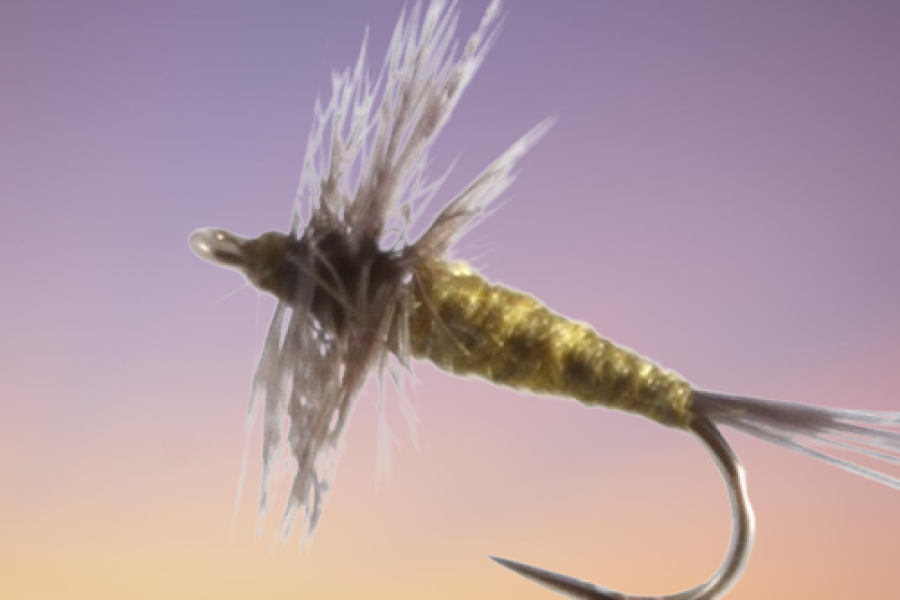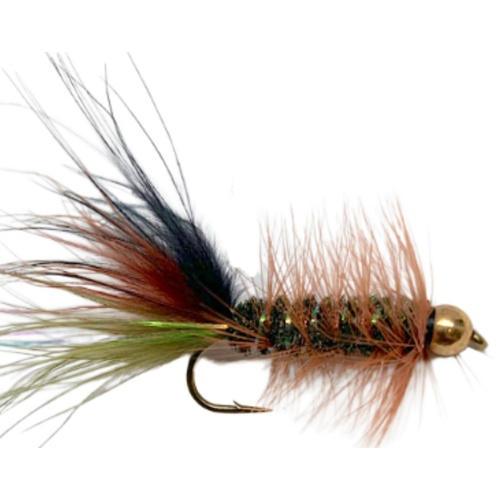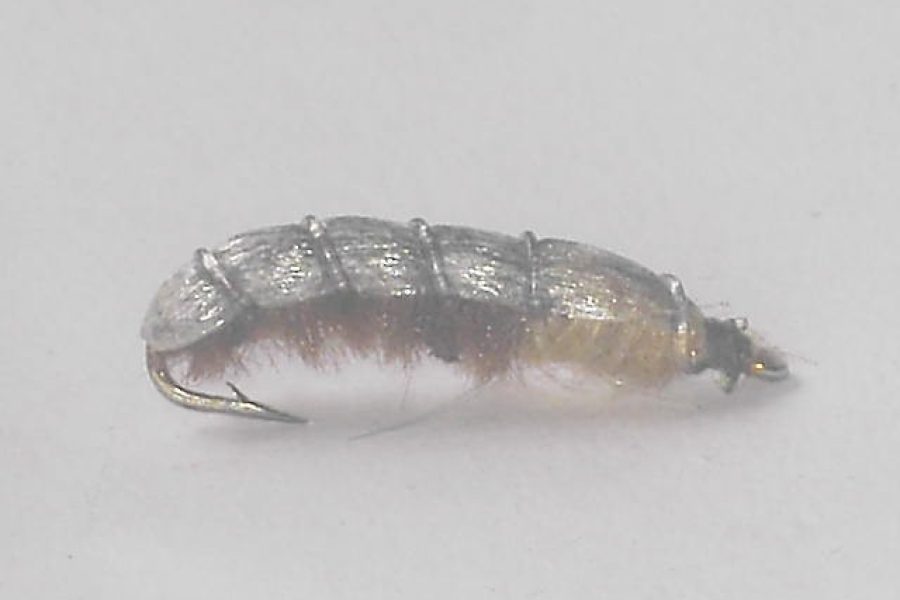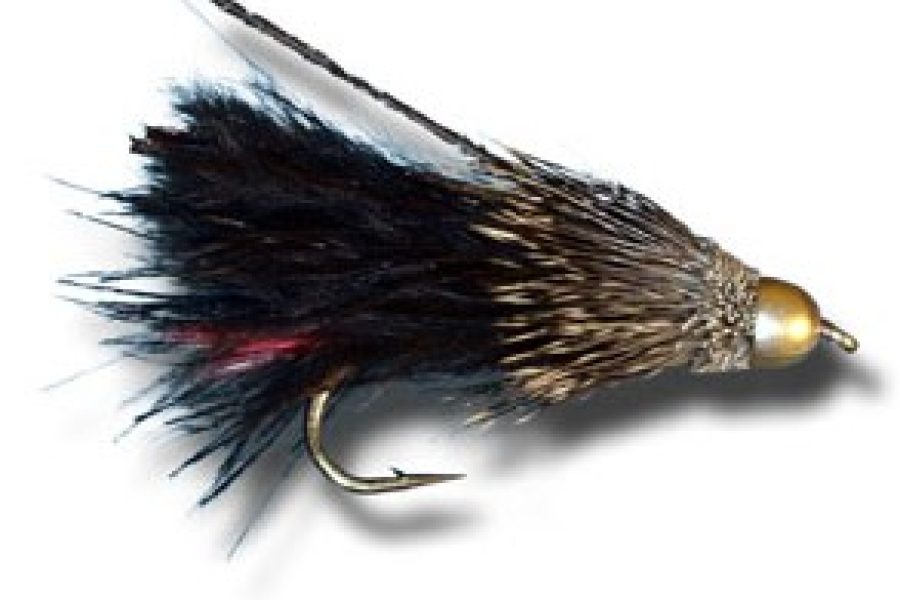Description
Historical Significance and Pattern Evolution The Thin Mint Streamer represents an innovative evolution of the classic Woolly Bugger pattern, designed specifically for selective trout in both rivers and lakes. This pattern combines traditional bugger design elements with modern materials and construction techniques, creating a highly effective pattern that excels in various water conditions. Originally developed as a specialized pattern for imitating multiple prey items, it has evolved into a versatile streamer that effectively represents leeches, baitfish, and aquatic insects.
Pattern Development History:
- Evolved from traditional Woolly Bugger design
- Enhanced through modern material integration
- Refined for selective trout applications
- Tested extensively in various waters
- Proven effective across multiple seasons
- Adapted for different fishing scenarios
- Modified for specific water types
- Established as a versatile pattern
- Continuously refined through field testing
- Validated through guide feedback
Material Science and Performance Enhancement Core Components:
- Precision-matched tungsten beads
- Premium grade marabou materials
- High-quality hackle feathers
- Flash enhancement materials
- UV-reactive components
- Specialized dubbing blends
- Enhanced durability features
- Strategic wire ribbing
- Size-specific components
- Color-matched materials
Material Integration Techniques:
- Multi-layer tail construction
- Advanced hackle application
- Strategic flash placement
- Body segmentation methods
- Movement enhancement
- Durability reinforcement
- Profile maintenance
- Color integration protocols
- Size consistency control
- Performance optimization
Technical Water Applications Deep Water Tactics:
- Precision depth control
- Current velocity compensation
- Structure approach protocols
- Depth maintenance systems
- Strike triggering methods
- Pattern movement variations
- Recovery position optimization
- Multiple retrieve patterns
- Line control refinement
- Speed management protocols
Shallow Water Applications:
- Edge water presentation
- Current seam exploitation
- Structure targeting methods
- Visual strike detection
- Pattern movement control
- Depth transition techniques
- Speed variation tactics
- Strike zone coverage
- Pattern rotation protocols
- Presentation angle optimization
Seasonal Pattern Applications Spring Tactics:
- Pre-spawn targeting strategies
- High-water adaptation techniques
- Temperature-based modifications
- Light condition adaptations
- Feeding window optimization
- Pattern size selection
- Color variation choices
- Depth control protocols
- Strike detection refinement
- Leader system modifications
Summer Applications:
- Early morning techniques
- Evening period strategies
- Deep water approaches
- Fast current tactics
- Temperature considerations
- Light penetration factors
- Oxygen level assessment
- Feeding behavior matching
- Pattern rotation protocols
- Presentation speed adjustment
Fall Strategies:
- Post-spawn targeting methods
- Water temperature adaptation
- Light condition considerations
- Pattern size modifications
- Color selection refinement
- Depth control methods
- Strike detection enhancement
- Recovery position optimization
- Multiple rig configurations
- Leader system adaptation
Winter Applications:
- Deep pool targeting
- Slow presentation methods
- Cold water adaptation
- Limited feeding windows
- Pattern size reduction
- Color selection optimization
- Depth control refinement
- Strike detection enhancement
- Recovery position adaptation
- Leader system modifications
Technical Water Applications River Systems:
- Deep pool presentation
- Structure targeting tactics
- Current seam reading
- Pattern size adaptation
- Leader length optimization
- Tippet diameter selection
- Strike detection refinement
- Recovery position selection
- Follow-through protocols
- Multiple retrieve considerations
Lake Applications:
- Deep structure fishing
- Drop-off presentation
- Weedline exploitation
- Structure targeting
- Depth variation
- Pattern size adaptation
- Color selection criteria
- Retrieve speed adjustment
- Strike zone identification
- Recovery position optimization
Environmental Adaptation Methods High Water Conditions:
- Weight adjustment techniques
- Pattern size modification
- Color selection refinement
- Presentation speed adaptation
- Depth control methods
- Structure approach strategies
- Safety consideration protocols
- Recovery technique modification
- Pattern rotation strategies
- Leader system adaptation
Low Light Operations:
- Enhanced visibility patterns
- Flash material integration
- Contrast enhancement methods
- Presentation modifications
- Depth adjustment protocols
- Strike detection systems
- Pattern size optimization
- Color brightness adaptation
- Recovery position modification
- Multiple pattern approaches
Advanced Rigging Specifications Leader Engineering:
- Specialized leader systems
- Technical tippet selection
- Strategic material placement
- Weight distribution calculations
- Tangle prevention protocols
- Line diameter progression
- Knot selection optimization
- Breaking strength analysis
- Visibility management
- Leader turnover dynamics
Terminal Tackle Configuration:
- Direct tie applications
- Loop knot optimization
- Pattern combination selection
- Weight placement strategies
- Line control enhancement
- Strike detection systems
- Leader balance considerations
- Casting adaptation methods
- Depth control mechanisms
- Pattern rotation protocols
The Thin Mint Streamer represents the perfect fusion of traditional bugger design principles and modern streamer fishing techniques. Its sophisticated engineering incorporates precise calculations with time-tested fishing methods, creating a pattern that consistently produces results across varying conditions. Whether targeting selective trout in technical waters or searching for opportunistic feeders in diverse environments, this pattern delivers exceptional performance through its carefully calculated design elements and versatile presentation capabilities.
Additional information
| Hook size | 10, 12, 14, 6, 8 |
|---|---|
| Hook type | Barbed Hooks, Barbless Hooks |







